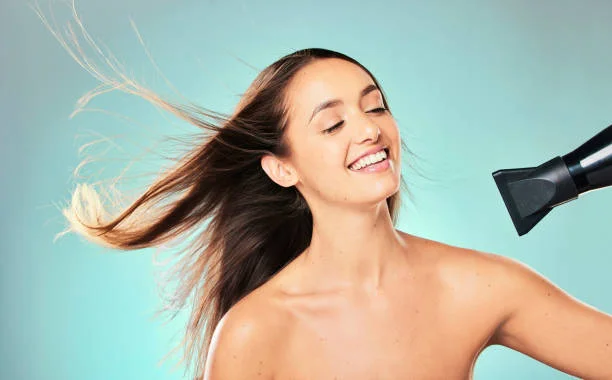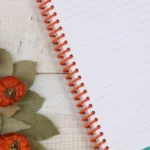Flyaway hairs ruin otherwise perfect hairstyles. You spend time blow drying and styling everything smooth, then walk outside or move around for five minutes and suddenly you’ve got dozens of short hairs sticking up at weird angles around your hairline and part. Regular brushes just move them around temporarily. Hair spray makes them crunchy. Smoothing serums weigh down your whole style. What you actually need is targeted control that handles flyaways without messing up the rest of your hair, and that’s exactly what a fly away hair wand does. These tools apply just enough product and light hold to problem areas without the heavy-handed approach that makes your whole head look greasy or sticky.
9Understanding Why Flyaways Happen in the First Place
Flyaways aren’t just annoying—they’re revealing something about your hair’s condition and environment. Shorter broken hairs around your face and part are often the result of damage or friction. Sleeping on rough pillowcases, pulling hair back too tight, or heat damage can all cause breakage that creates these shorter strands. They stick up because they’re not long enough to weigh themselves down like the rest of your hair.
Static electricity causes another type of flyaway. When humidity is low, hair loses moisture and becomes more prone to static buildup. Friction from brushing, touching your hair, or even removing a sweater can create an electrical charge that makes individual hairs repel each other and stick out. This is why flyaways get worse in winter when indoor heating dries out the air.
Natural baby hairs are different from damaged flyaways but create similar problems. These are new growth around your hairline and they’re healthy—just short and often finer in texture than the rest of your hair. They won’t weigh down easily and tend to curl or wave independently. Humidity affects them more than longer, heavier hair.
Unlock new ideas with this related post—crafted to match your curiosity.
How Flyaway Wands Differ from Other Styling Tools
A flyaway wand looks like a mascara tube but contains hair-specific formulas instead of makeup. Most use clear gels, light serums, or water-based formulas that provide hold without visible residue. The applicator is usually a small brush or comb attachment that lets you target specific hairs or small sections precisely.
The formulation matters more than people realize. Good wands use ingredients like polymers for light hold, humectants to attract and retain moisture, and sometimes plant-based oils for conditioning. They’re specifically balanced to work on small amounts of hair without the heavy ingredients you’d find in regular gels or pomades.
Compare this to alternatives like hairspray, which affects your entire head and makes hair stiff. Or smoothing creams that you apply with your hands, which inevitably get more product on more hair than you intended. The wand’s precise application means you’re only treating the problem areas.
Application Techniques That Actually Work
Start with dry, styled hair. Wands work best as a finishing step, not during initial styling. If you use them on damp hair or before blow drying, the product won’t perform correctly and you’ll likely end up with either no hold or too much.
The brushing motion should be light and directed. For hairline flyaways, brush down and back toward your scalp. For part flyaways, brush in the direction your hair naturally lays. Don’t scrub or press hard—you want to coat the hair, not saturate it. Most wands require only one or two passes over a section.
Amount of product is crucial. Wands are designed to dispense small quantities, but you still need to avoid over-application. If you see visible product or your hair looks wet after application, you’ve used too much. The goal is just enough to smooth and hold without changing texture or appearance.
Ingredient Breakdown and What Actually Matters
Most flyaway wands contain water as the primary base, which keeps the formula light and non-greasy. Polymers like VP/VA copolymer or PVP provide holding power—these are the same ingredients in hairspray but at much lower concentrations. The polymer molecules form a light film on hair strands that helps them stay in place without stiffness.
Glycerin shows up frequently as a humectant. It pulls moisture from the air into your hair, which helps reduce static and keeps hair more pliable. However, glycerin can be problematic in very dry or very humid climates. In dry conditions, it may pull moisture from your hair instead. In humid weather, it can attract too much moisture and cause frizz. Quality wands balance glycerin with other ingredients to minimize these issues.
Some formulas include lightweight oils like argan, jojoba, or grapeseed oil. These provide slip and shine without the heaviness of coconut or castor oil. The concentration needs to be low—typically under 5%—or the product becomes too greasy for fine flyaways.
Silicones like dimethicone or cyclomethicone appear in many wands. These create smoothness and shine while repelling moisture that could cause frizz. Water-soluble silicones are preferable because they don’t build up as much, though any silicone requires proper cleansing to avoid long-term accumulation.
When Wands Work Best and When They Don’t
Flyaway wands excel at taming short broken hairs and baby hairs around your hairline and part. They’re perfect for quick touch-ups before photos or meetings. The precise application lets you fix specific problem areas without redoing your entire style.
They struggle with all-over frizz or humidity-induced puffiness. If your whole head is frizzy, a wand isn’t the right tool—you need a different approach like anti-frizz serum applied to damp hair or a humidity-blocking finishing spray. Wands target specific strands, not broad issues.
Hair texture affects results too. Fine to medium hair responds well because it doesn’t need much product to stay in place. Very thick or coarse hair might need multiple applications or a stronger-hold formula. Extremely curly or textured hair often needs heavier products than most wands provide, though some brands make specific formulas for coarser textures.
Comparing Popular Formulas and What Works
Gel-based wands offer the strongest hold but can feel slightly stiff if over-applied. They work great for people with very stubborn flyaways or in high-humidity environments where lighter formulas fail. The clear gel formula dries invisible when used correctly.
Water-based or serum wands provide lighter hold with more natural movement. These suit everyday use and work well on finer hair that doesn’t need aggressive control. They’re less likely to cause buildup and generally feel less noticeable on hair.
Oil-based formulas prioritize smoothness over hold. They tame frizz through lubrication rather than fixing hair in place. These work better for people whose flyaways are more about texture than actual lifting away from the head.
Some wands include additional features like vitamins, proteins, or botanical extracts. These are nice additions but probably won’t dramatically change performance. The base formula—whether gel, water, or oil—matters more than supplemental ingredients.
Making Results Last Throughout Your Day
Flyaway wands typically provide 4 to 8 hours of control depending on formula strength, weather conditions, and activity level. Reapplication is easy since wands are portable and quick to use. Keep one in your bag for midday touch-ups.
Environmental factors impact longevity. Wind, rain, and humidity all work against flyaway control. In challenging weather, you might need to reapply every few hours. Indoors with stable conditions, morning application often lasts all day.
Layering products can extend wear time. Start with a light anti-frizz serum on damp hair, blow dry, style as usual, then use the wand as a finishing step. This multi-layer approach addresses frizz at different stages rather than relying on one product to do everything.
Hair washing frequency affects flyaway severity. Freshly washed hair often has more flyaways because it’s clean and full of static. Day-two or day-three hair usually behaves better since natural oils have distributed and hair has settled. Adjust your wand usage based on where you are in your wash cycle.
Practical Tips Nobody Mentions
Store wands upright rather than on their side. This prevents product from pooling at one end and ensures consistent dispensing. Some formulas separate if left horizontal for extended periods.
Clean the applicator brush or comb occasionally. Product buildup on the applicator reduces effectiveness and can transfer old, oxidized product to your hair. A quick rinse with warm water every few weeks keeps it functioning properly.
Temperature affects formula consistency. Very cold conditions can make gel-based wands thicker and harder to dispense. Very hot environments can make them runnier. Store at room temperature when possible.
Don’t share flyaway wands with others. The applicator touches hair and can transfer oils, products, or even scalp conditions. Personal care tools should stay personal.
Explore more and see how small ideas can lead to powerful results at Management Works Media.






